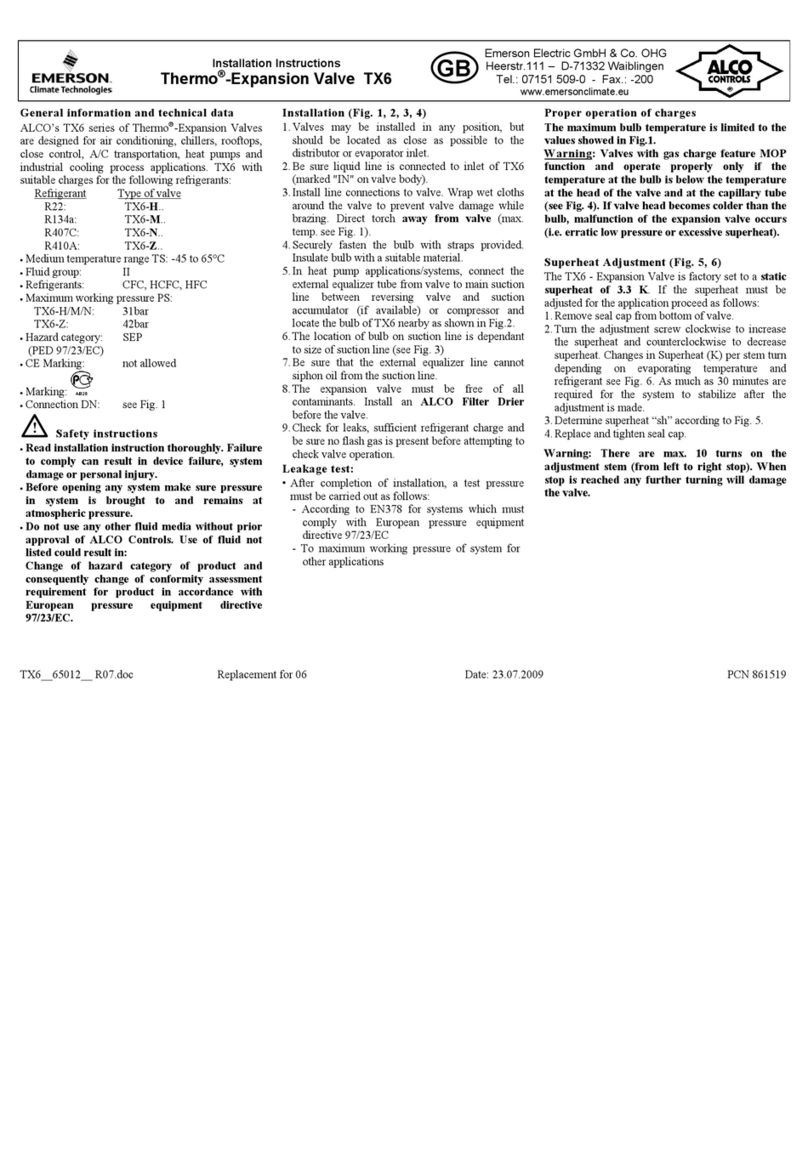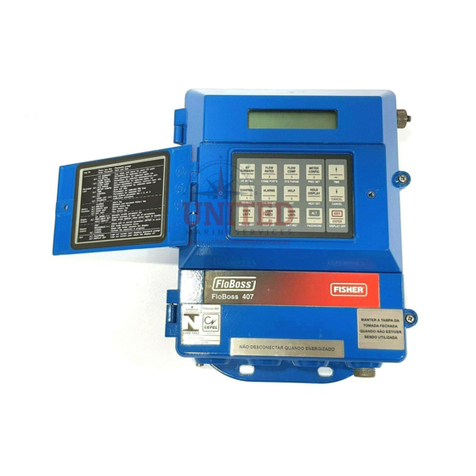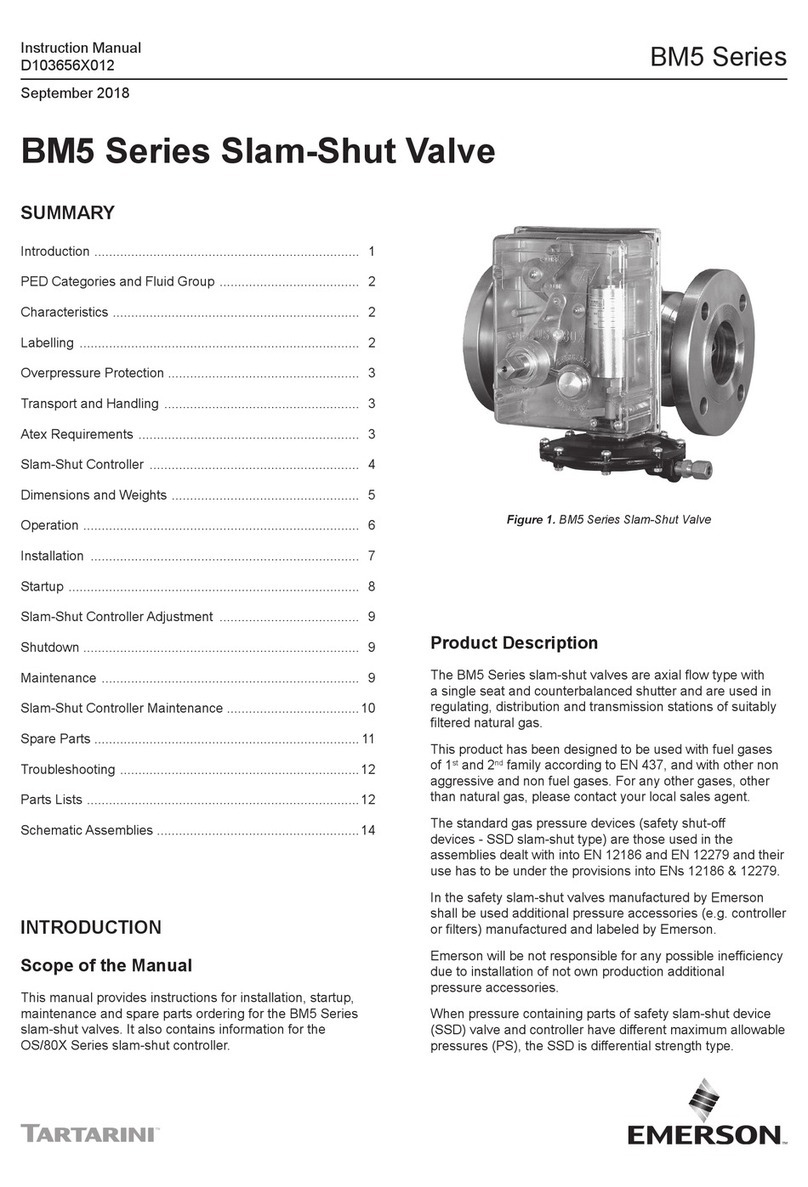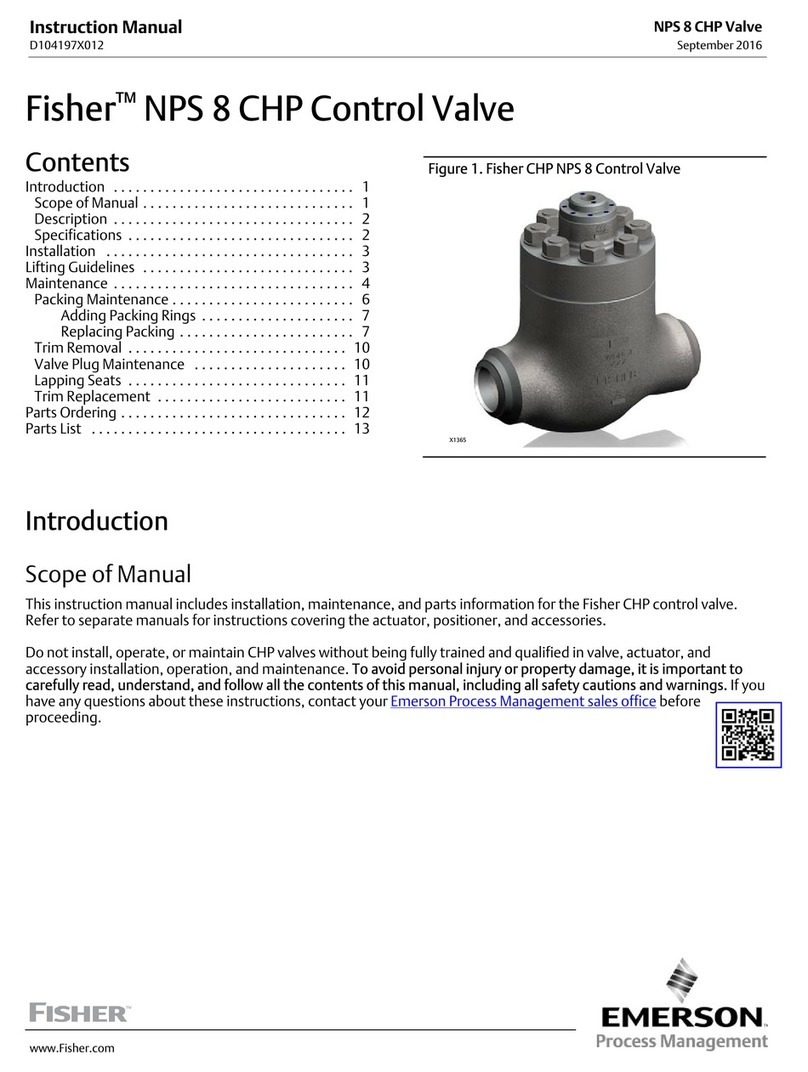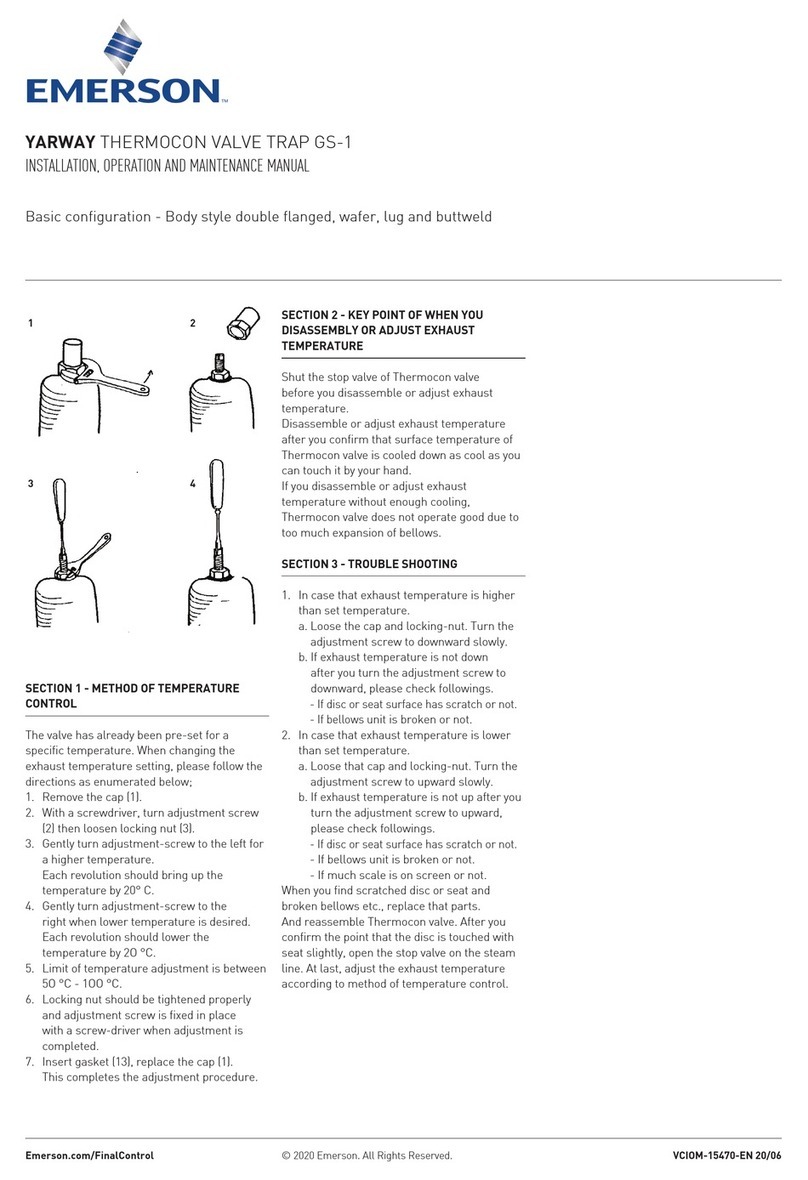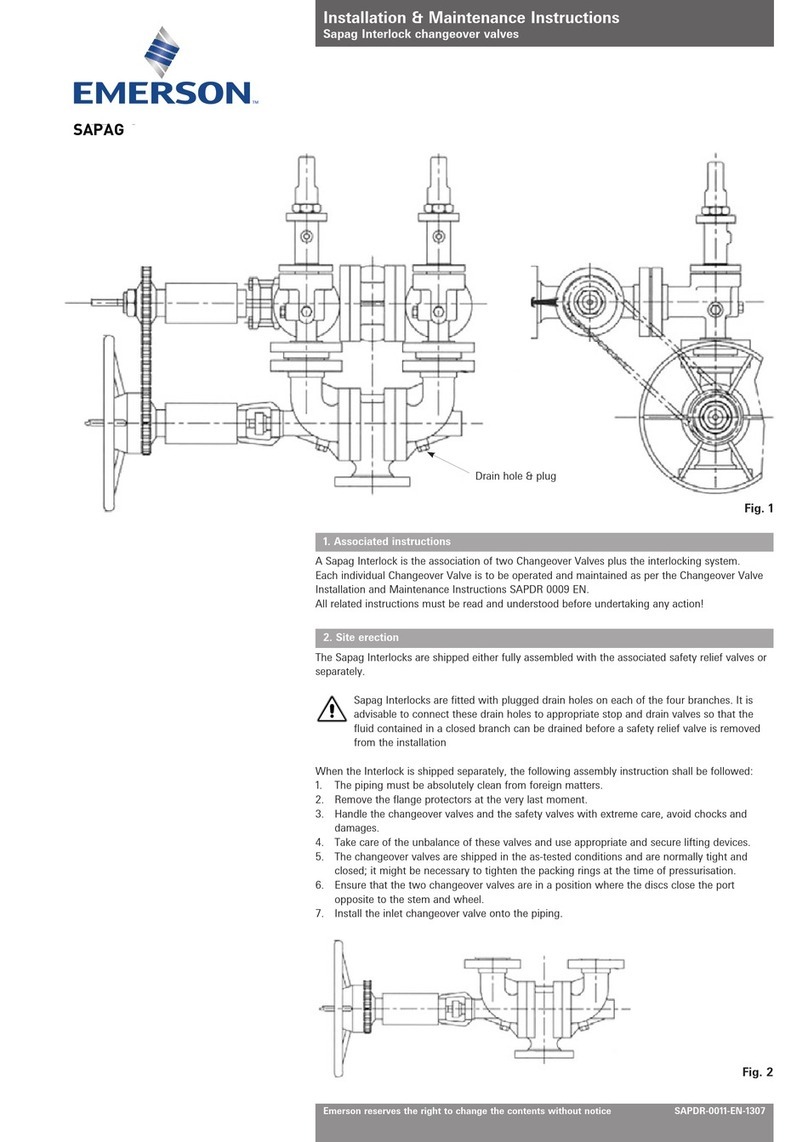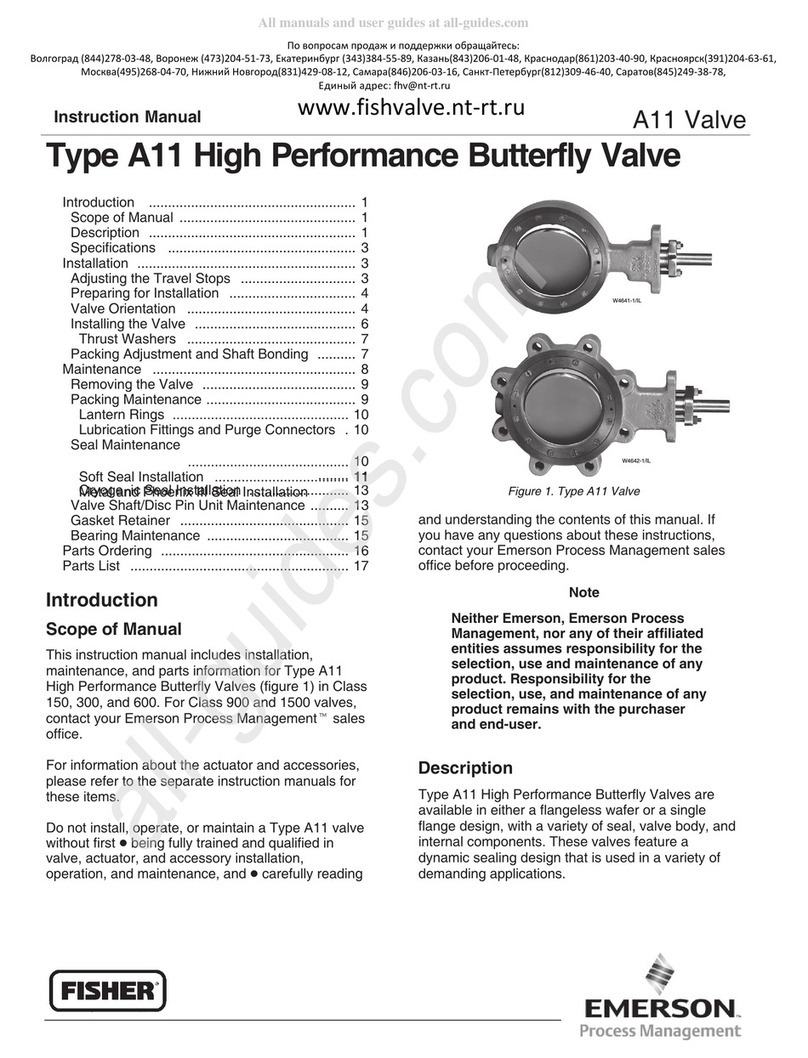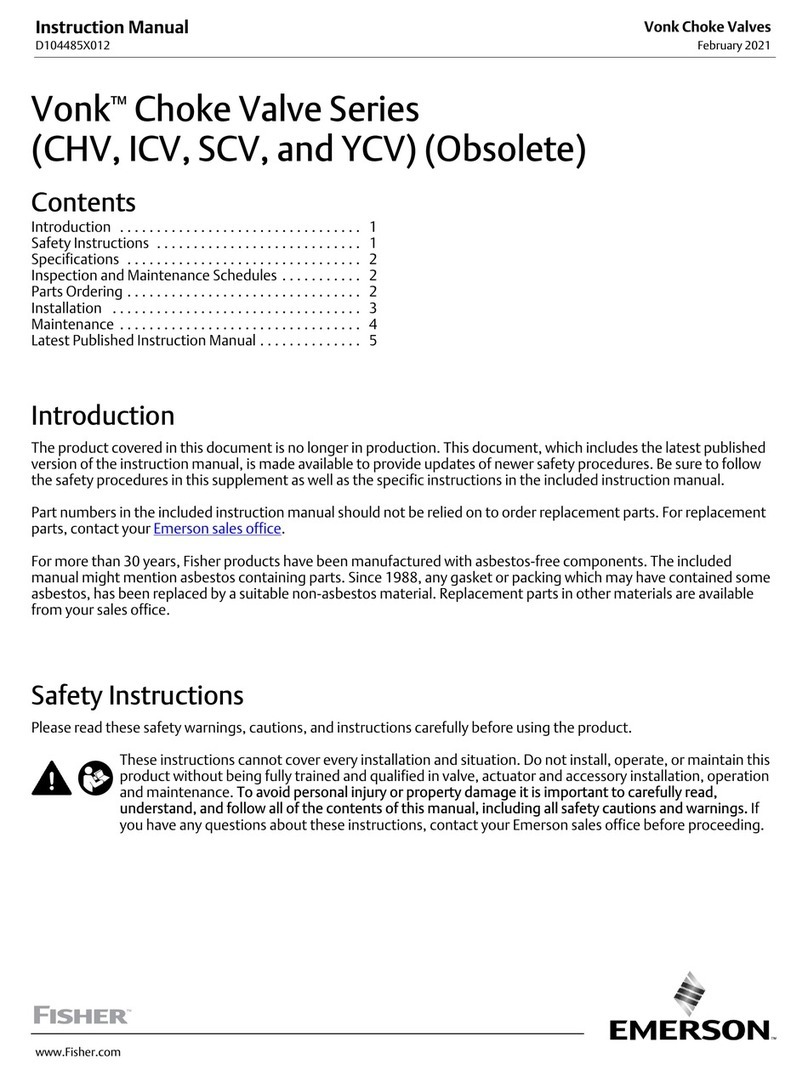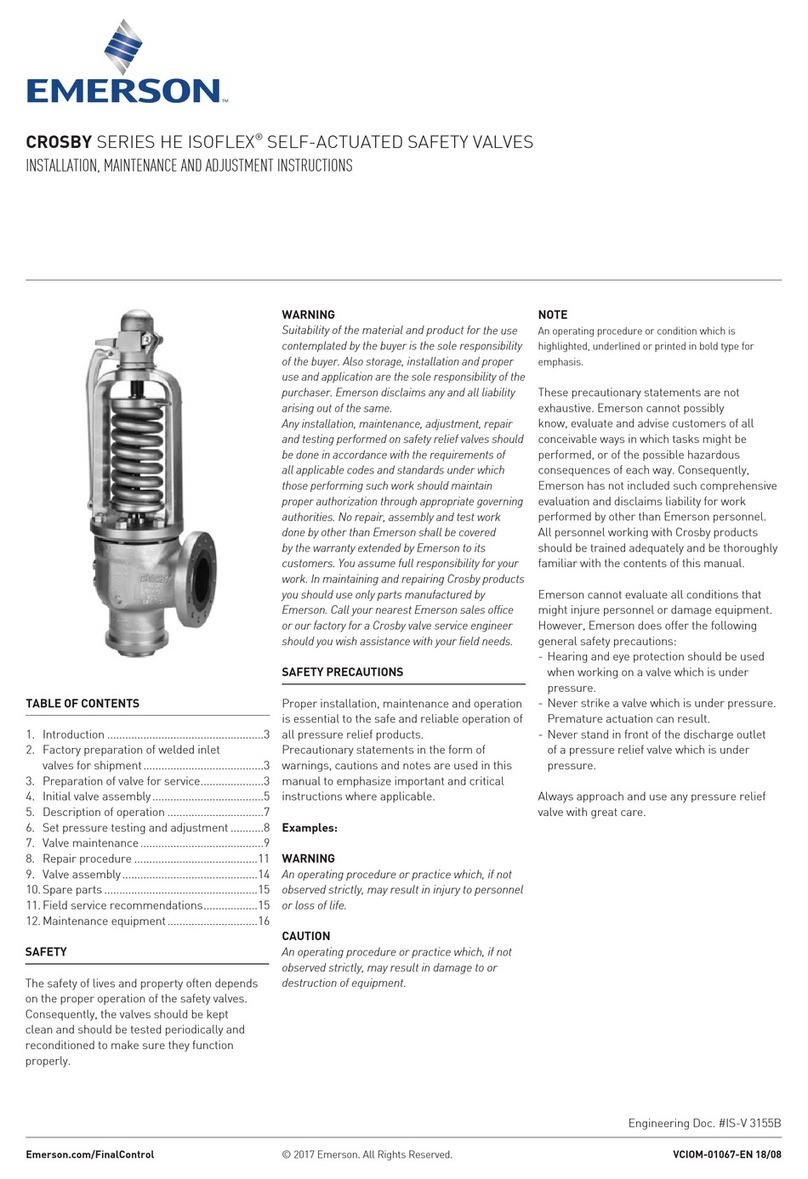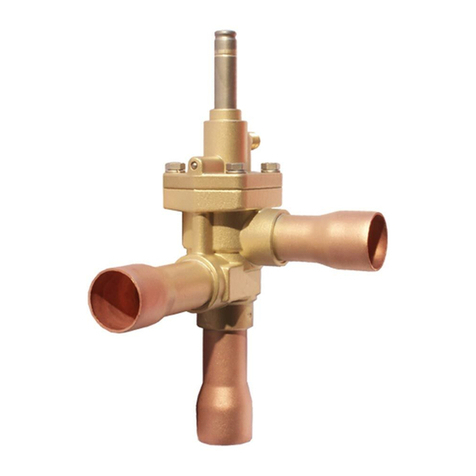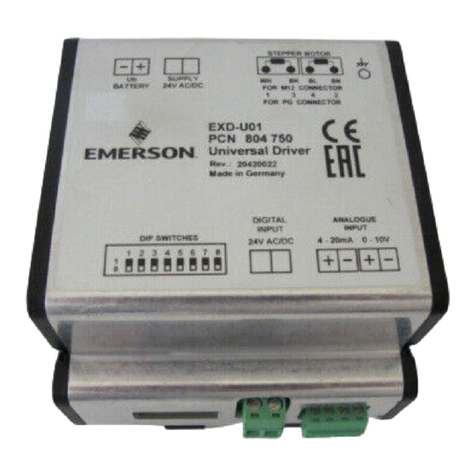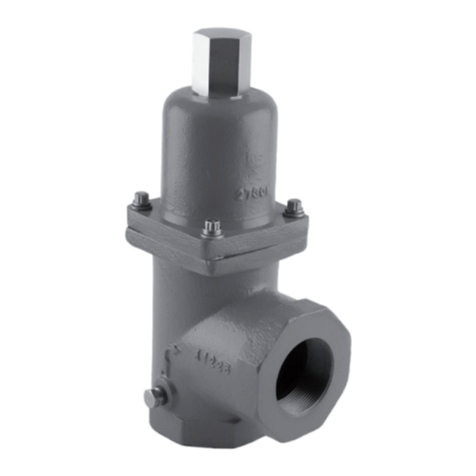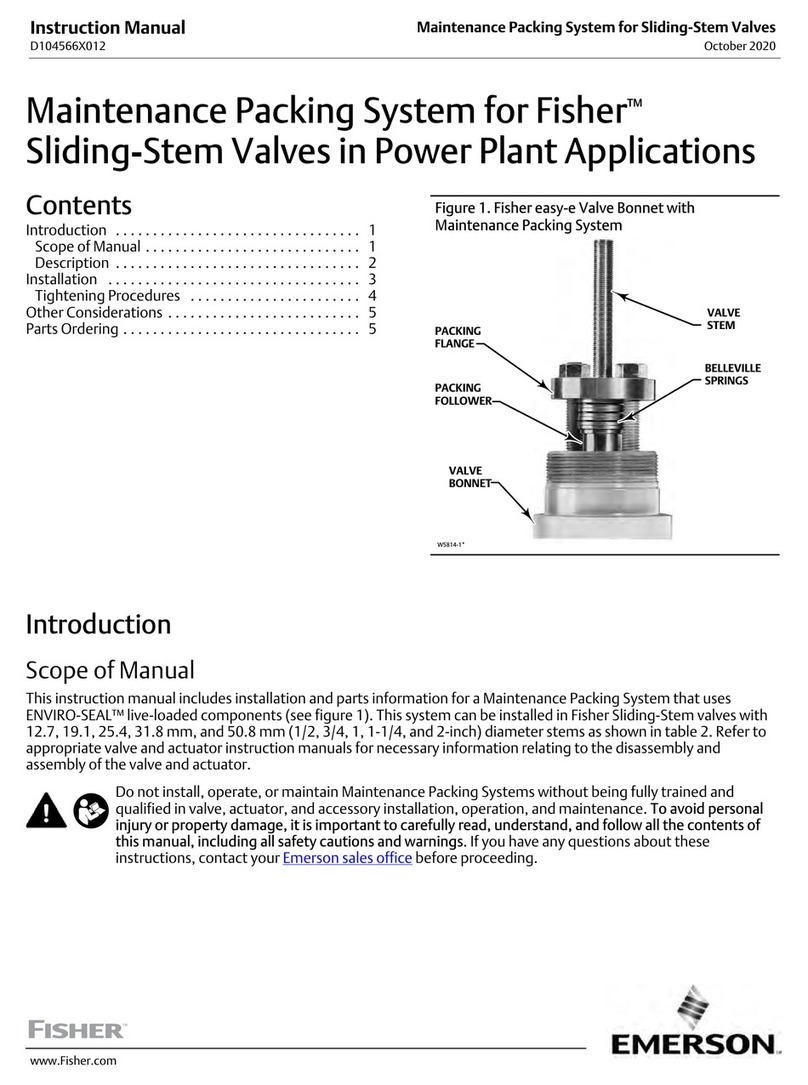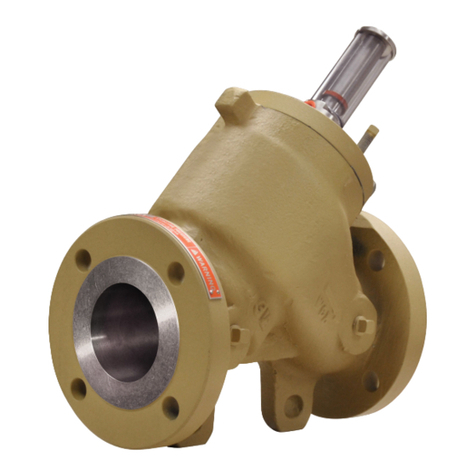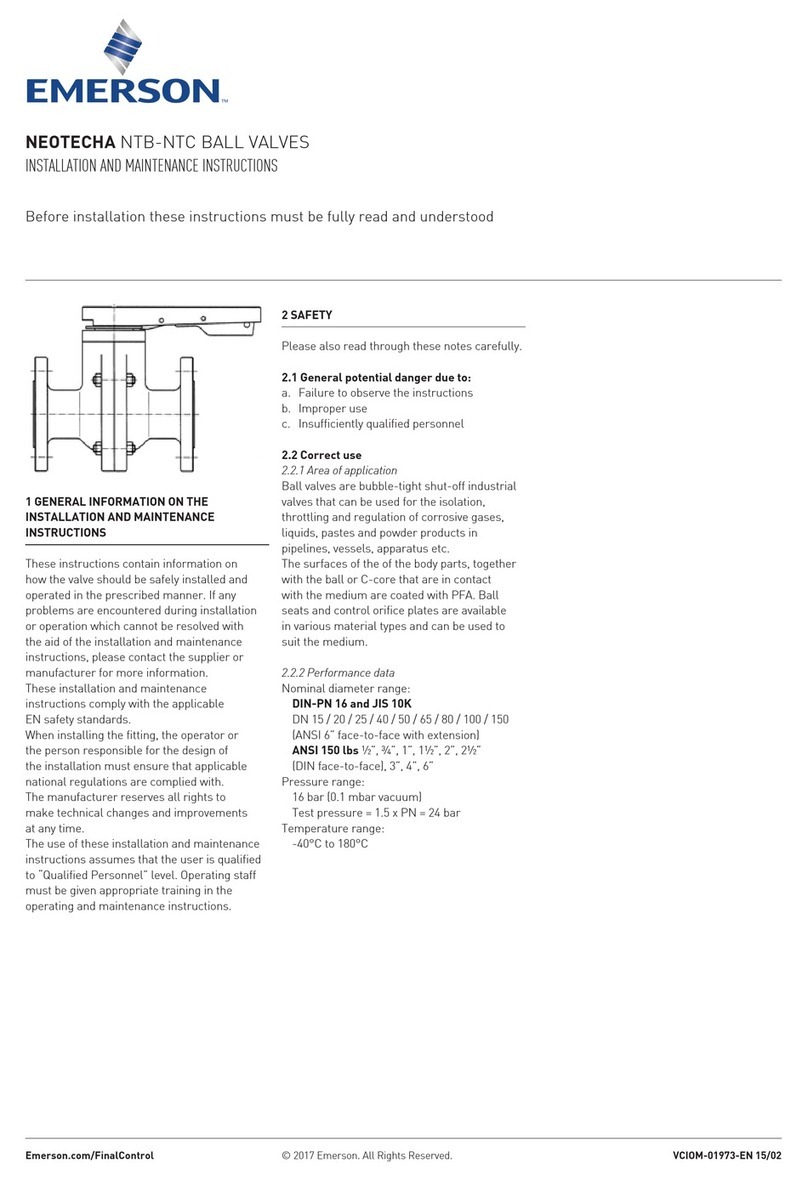
V260 Valve
Instruction Manual
May 2010
7
from the valve body cavity. If
necessary, disassemble the valve in a
safe area for cleaning.
See the WARNING at the beginning of
the Maintenance section for more
information before removing the valve
from the pipeline.
Disassemble the valve only to the extent necessary
to accomplish the needed inspection and repairs.
For some repairs (for example, the trim parts only)
complete disassembly of the valve is not necessary.
Follow the disassembly procedures to the point
necessary to accomplish the repair, then skip to the
appropriate assembly steps to complete the
reassembly of the valve. Always clean and protect
sealing surfaces from damage.
Mark parts as necessary to allow them to be
returned to the same position as removed. For
example: Be sure to return the tailpiece to the same
end of the valve from which it was removed. Also,
the seal assembly within the tailpiece should be
returned to the same tailpiece from which it was
removed. The bearing plates should be marked and
reinstalled on the ball in the same position as they
were, when removed.
1. Isolate the control valve from the line pressure,
release pressure from both sides of the valve body,
and drain the process media from both sides of the
valve. If using a power actuator, shut off all pressure
lines to the power actuator, release pressure from
the actuator, and disconnect the pressure lines from
the actuator. Use lock-out procedures to be sure that
the above measures stay in effect while you work on
the equipment.
2. Remove line bolting, remove the control valve
from the pipeline, and clean all valve surfaces. Place
the actuator/valve assembly on a flat working
surface.
3. Mark parts as necessary to allow them to be
returned to the same position during re-assembly.
4. Perform the procedure in the Packing
Maintenance section to remove the actuator from the
valve. When valve maintenance is complete, refer to
the Mounting Actuator procedure at the end of the
Maintenance section to re-install the actuator on the
valve.
5. Provide a clean soft working surface to protect
the tailpiece-flange sealing surface.
a. If the valve does not have an attenuator dome,
lift the valve and place it on its side with either
tailpiece flange resting on the flat surface. Be
sure the valve is in a stable, upright position
before releasing the hoist connection.
b. If the valve has a single attenuator dome, it is
best to position the valve body so the tailpiece
with the dome is in the down position. Be sure the
valve is stable, in an upward position before
releasing the hoist connection.
Note
If the packing is in good condition, it is
possible to remove and replace the
seal assembly, or dome assembly
without removing the packing box
assembly. However, the packing
assembly must be removed to remove
the ball (key 11) from the valve body.
6. Remove the packing housing nuts (key 23).
Remove the packing housing assembly from the
valve. The assembly includes all the packing box
parts, drive shaft, O-ring seals, bearing, and other
parts.
7. Remove the nuts from the studs (keys 19 and 3)
to remove the tailpiece/valve connection. (Refer to
figure 6).
Note
While lifting the tailpiece (key 2 or 6)
from the valve body, check to see if
the seal assembly is lifting with the
tailpiece. (Note: Some valve
constructions do not have a seal
assembly installed in the tailpiece.) If it
is, slide something between the ball
and tailpiece to protect the ball in case
the seal assembly falls out of the
tailpiece.
8. If the valve has dual attenuator domes, tap the
dome to loosen it from the top tailpiece before the
top tailpiece is lifted from the valve body.
9. Turn the tailpiece over so the seal assembly is
facing up, and place it on a clean soft surface with
the flange face down.
10. From the tailpiece assembly or from the valve,
remove the seal assembly, wave spring, and O-ring
seal (keys 8 and 7). Clean and protect all sealing
surfaces.
